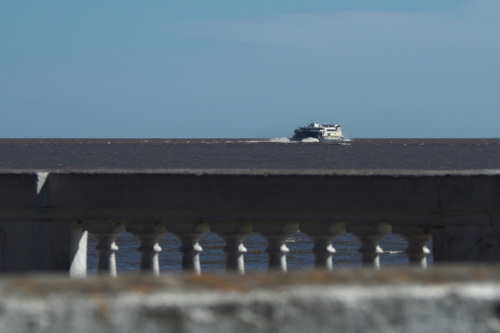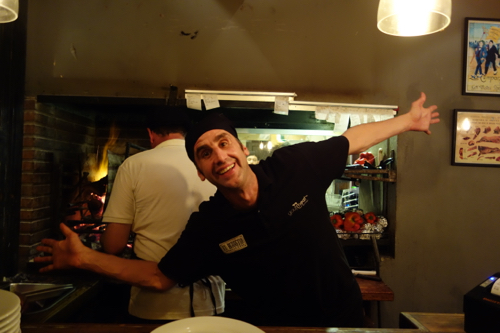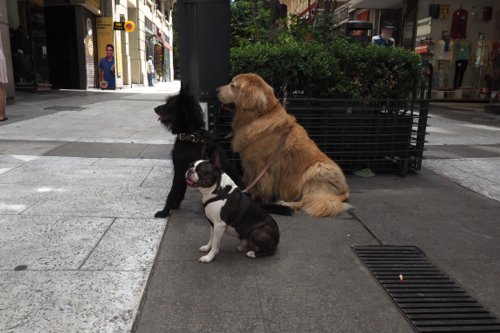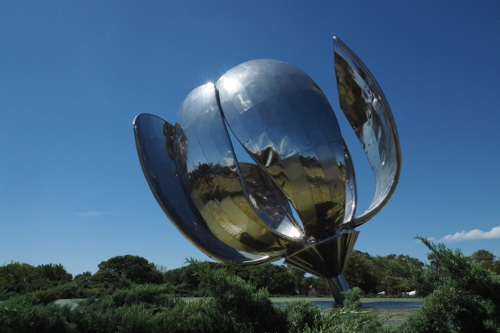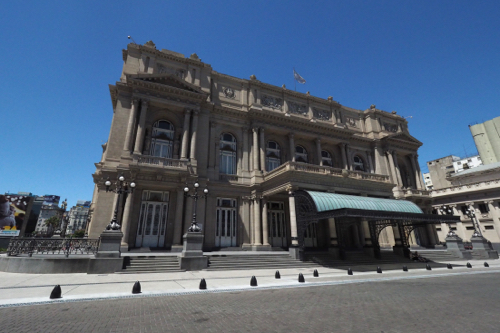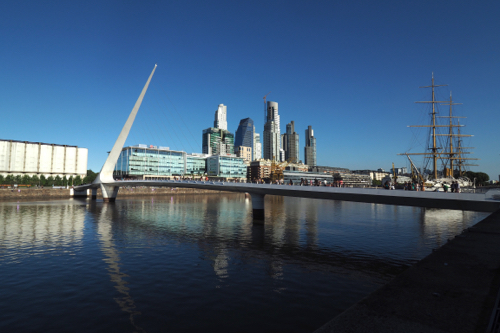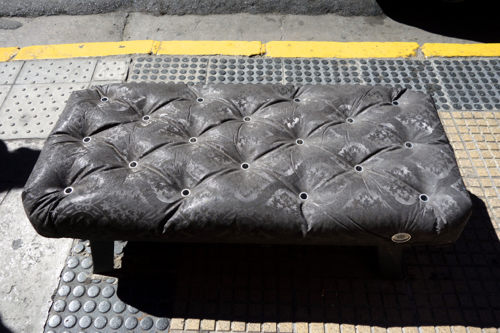February 15, 2018. Buenos Aires, Argentina, to Colonia, Uruguay.
After spending longer in Buenos Aires than expected we were moving on.
This time to Uruguay.
Our side excursion package included two ferry rides, a bus trip, accommodation and daily excursions.
Our ferry from Buenos Aires was the Francisco. It was large, sleek, fast and carried both cars and passenger.
The ferry terminal was run like an airport with check-in counters and baggage drop. There was even a baggage carousel at the Uruguay end.
Both on the ferry and the bus transfer to the hotel, not a word of English was spoken.
There wasn’t that much English when we arrived in Colonia del Sacramento or simply Colonia as it is known. There were only two tourist buses a day that had an English guide.
Colonia faces Buenos Aires, across the Río de la Plata and was once a Portuguese colony.
Colonia del Sacramento was founded by Manuel Lobo in 1680 under the direction of King Peter II of Portugal.
Over history Uruguay has been ruled by both the Spanish and the Portuguese, however the official language is Spanish. It gained independence from Brazil in 1828 and today is one of the most prosperous countries in Latin America.
It is ranked first in regard to peace, democracy, press freedom and the perception of low corruption. It also has the most prosperous middle class, with economic freedom and income equality.
Voting is compulsory with 92% of the Uruguayans opting to go to the ballot box. The army is voluntary and mainly used for natural disasters and peace keeping. Marijuana and cannabis are also legal and gay marriage was legalised in 2013.
They certainly are very progressive in Uruguay.
Dinner on our first night was at Típico Nuestro and it will probably go down as one of the worst meals we have had in South America.
The kababs had been pre cooked and were tough – the beef was inedible.
There was an extensive list of local craft beers but it took me five choices before they could actually find one in stock.
I ordered a glass of red wine but, like the beer, it wasn’t available. So I chose another one. The waiter poured what was left in the bottle, which wasn’t nearly a full glass.
He was content to leave it like that.
When I ordered another glass of the same wine, it was switched to a different one.
Do they really think we are that stupid?
When we came to pay our bill the waiter expected a tip – he got nothing.
So much for the quality of life and high living standards in Uruguay. We certainly didn’t see it at Típico Nuestro.
February 16, 2018. Colonia, Uruguay.
After breakfast in our hotel we walked back down to the port for our first excursion.
In Colonia we had both a walking tour and then a days worth of travel on the Hop-On Hop-Off Bus.
The walking tour of the old town was first, however they gave us a drive around the bus circuit before we started. Here everything was explained in English.
Apart from this trip at 10am and another at 3pm, all the other Hop-On Hop-Off Bus services were only in Spanish.
Our guide had excellent English and a great sense of humour.
An interesting feature of Colonia is the contrast between the Spanish and Portuguese heritage. This is most evident in the architecture and, strangely, the construction of the roads.
The Portuguese didn’t bother about drainage or sewerage, they just prayed for rain to wash everything onto the roads and then into the river.
Their roads are concave with a central channel to help with drainage.
The Spanish roads are convex with drainage in the form of gutters on either side.
Their more formal approach is probably due to the huge influence the Romans had in the Spanish part of the Iberian Peninsula.
The housing was also different between the Portuguese and the Spanish.
The Portuguese use adobe and their houses were usually limited to one storey. While the Spanish built with bricks and we usually two storeys high.
Another interesting feature of Colonia was the street dogs. (This is the subject of a separate blog)
The historical centre of Colonia is a UNESCO World Heritage Site and many tourists make a day trip from Buenos Aires.
After our walking tour around the historic quarter we jumped onto the Hop-On Hop-Off Bus.
A fair drive out of town was the Bull Ring and Casino.
The bull ring was opened in 1910 and could hold up to 10,000 blood thirsty patrons. It only hosted bull fights for eight events before it was closed by the Uruguayan National Government in 1912.
Today it lies derelict.
The bull ring was part of an ambitious tourist project that also included a racecourse and casino. Only the racecourse is still in operation.
February 17, 2018. Colonia to Montevideo, Uruguay.
The morning was taken up with a bus trip from Colonia to Montevideo.
We were staying in the Hotel Aloft, a haven for the tech tourist, with power and USB points everywhere. We were very close to the water, which was great for a stroll after the bus trip.
It wasn’t in the centre of Montevideo but there were good restaurants and coffee shops within the very upmarket area surrounding our hotel.
This was good as it was Thea’s birthday, so we needed to find somewhere interesting for dinner.
Also just near our hotel was the Punta Carretas Shopping Mall. It was a former prison built in 1910 and designed by Domingo Sanguinetti.
The site was redeveloped and became the mall 1994. Now not much of the prison remains, except the entrance.
Interesting there was a mass break-out of the prison in 1971. A tunnel was used as part of the escape plan and the exit was in El Berretin, the restaurant where we celebrated Thea’s birthday.
Montevideo is the capital of Uruguay and the largest city. It was established in 1724 by a Spanish soldier, Bruno Mauricio de Zabala. This was a strategic move during the constant Spanish-Portuguese conflicts.
February 18, 2018. Montevideo, Uruguay.
We again used the Hop-Off Bus around Montevideo and stopped at Plaza Cagancha (Stop 3) and walked back to Plaza Independencia (Stop 2). We then picked up the bus again and from there we did the rest of the trip back to our stop (Stop 7).
In Plaza Independencia there was a very impressive statue of General José Artigas (1764-1850).
Artigas was born in Montevideo and was a national hero of Uruguay. He was a democrat, federalist and opposed to monarchism (The Spanish).
In 1850 he died in Paraguay, aged 86, after a long period of self exile there. It wasn’t until 1977 that his remains were returned to the Artigas Mausoleum in Montevideo.
We were fascinated to see so many Uruguayans drinking Yerba Mate Compuesta (A strange drink that requires a thermos with a cup and straw) Yerba mate is a herb used too make a tea beverage known as mate. It was first cultivated by the indigenous communities of the Guarani people in southern Brazil, before European colonisation.
There is also a chilled version which is prepared with cold water and ice rather than with hot water.
There were four football teams staying at the Aloft Hotel. They were playing in an under 20 competition, the ‘River Plate’ which was hosted by Uruguay.
The small pool table in reception was never un-occupied.
February 19, 2018. Montevideo, Uruguay to Buenos Aires, Argentina.
The ferry trip back to Buenos Aires wasn’t until 7:30 pm so we had another day in Montevideo.
Unfortunately the good weather ended and rain was forecast.
The rain held off and we caught a taxi to the Mercado Agrícola de Montevideo.
Built between 1906 and 1913, it is regarded as one of the largest covered market in South America.
After a wander around and then a coffee we walked back to the Parliament building.
The legislative centre of Uruguay is in a massive Neo-Classical building. Construction started in 1904 and it was inaugurated in 1925 to celebrate the centenary of the declaration of independence.
We then returned to the market and had lunch – it was still a long time until the ferry left.
